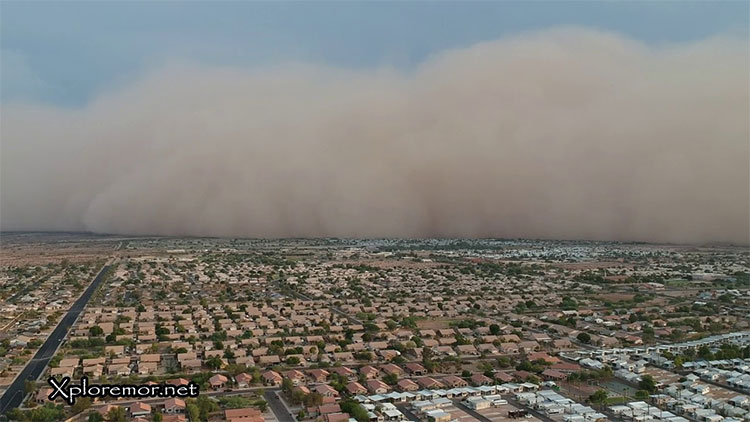The sand wall over a thousand meters crashed into the American city
The giant sandstorm quickly reached the city of Phoenix, reminiscent of the end of the world.
The 1.6-kilometer sandstorm , or haboob, swallowed the city of Phoenix, Arizona, USA, on August 2, causing more than 120,000 people to lose power and some buildings destroyed, according to Mother Nature Network . "It's a huge sandstorm. This is the classic sandstorm in Arizona sweeping across the southeast of the Death Valley," said Jerry Ferguson, a KPHO channel reporter.

The scene when sandstorms approached almost like the end of the world.
Haboob is extremely strong sandstorms that form in thunderstorms, which can quickly turn the entire land into a dark place. The scene when sandstorms approached almost like the end of the world. Haboob is an Arabic word meaning "windy" . The American Meteorological Association (AMS) used the word haboob for the first time in 1972 to compare Arizona dust storms with the common dust storm in Sudan. "Although less frequent than dust storms in Sudan, these storms are also much stronger," the AMS said.
Sandstorms appear when strong winds blow down and spread out from a thunderstorm, swept with dust and sand in arid desert areas like Arizona. The wind creates a sand wall that can spread over a large area within minutes. Some sandstorms can reach a height of up to 3,048m and a speed of 128km / h.
Although often quickly dissipated, sandstorms remain a serious threat, hindering visibility, making you unable to look beyond half a meter. Winds can damage power lines and destroy buildings.
- Sandstorm 100 meters high in Inner Mongolia
- Explore the world-like sand hill in Thousand and One Nights in Japan
- The Chinese city was 100m high in the sand wall
- 'City wall' appeared after the earthquake in New Zealand
- 5 mysterious legends about the Great Wall
- Where does sand in the sea come from?
- Unique sand museum in Japan
- Warning the world is about to run out of sand
- Relocate honey bee nest 35,000 in the wall of American people
- Turn dirty sand into clean sand
- Why can't sand and sea sand be used for construction?
- The reason why the Great Wall of Thousand Years did not fall caused many people to be shocked
 Is the magnetic North Pole shift dangerous to humanity?
Is the magnetic North Pole shift dangerous to humanity? Washington legalizes the recycling of human bodies into fertilizer
Washington legalizes the recycling of human bodies into fertilizer Lightning stone - the mysterious guest
Lightning stone - the mysterious guest Stunned by the mysterious sunset, strange appearance
Stunned by the mysterious sunset, strange appearance Air pollution can change the structure of the heart
Air pollution can change the structure of the heart  Fog wall covering British beach
Fog wall covering British beach  Discover 44 new caves in Phong Nha-Ke Bang area
Discover 44 new caves in Phong Nha-Ke Bang area  Earth will become a giant greenhouse
Earth will become a giant greenhouse  The hot sun caused a forest fire to reveal a mysterious message from World War II
The hot sun caused a forest fire to reveal a mysterious message from World War II  Earthquake disaster in Indonesia: The number of deaths increased to 380
Earthquake disaster in Indonesia: The number of deaths increased to 380 